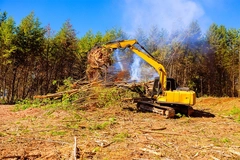
- Industry news
Industry news
- Category news
Category news
- Reports
- Key trends
- Multimedia
- Journal
- Events
- Suppliers
- Home
- Industry news
Industry news
- Category news
Category news
- Reports
- Key trends
- Multimedia
- Events
- Suppliers
EFSA’s risk assessment on nitrosamine exposure in food raises health concern

28 Mar 2023 --- Exposure to nitrosamines through food, during its preparation and processing, “raises a health concern,” flags the European Food Safety Authority in its latest draft opinion. EFSA’s assessment on the public health risk related to the presence of nitrosamines in food, found ten nitrosamines are carcinogenic and genotoxic (may damage DNA).
“EFSA’s assessment concludes that it is highly likely that dietary exposure to nitrosamines is above the level that raises a health concern for all age groups,” an EFSA spokesperson tells FoodIngredientsFirst.
Nitrosamines are not intentionally added to food, they are chemical compounds that can form in food as a consequence of food preparation and processing.
However, in what foods exactly nitrosamines can be found is not clear, admits EFSA.

While nitrosamines have been found in different foodstuffs, such as cured meat products, processed fish, cocoa, beer and other alcohols, they can also be found in other foods.
“Data on the presence of nitrosamines in raw meat, vegetables, cereals, milk - including human milk - and dairy products, fermented foods, pickled preserves, spiced foods and products cooked in different ways are very limited,” the spokesperson explains.
Nonetheless, the body believes meat and meat products are the most important food group contributing to nitrosamine exposure, recommending consumers balance their diet with a wider variety of foods to reduce intake.
Some countries like France have been proactive in targeting nitrates, with France adopting a nitrates law in 2022.
Carcinogenic and genotoxic
Ten of the 23 nitrosamines analyzed found in food are carcinogenic and genotoxic, according to EFSA’s assessment.
 Ten of the 23 nitrosamines analyzed found in food are carcinogenic and genotoxic.“Based on animal studies, we considered the incidence of liver tumors in rodents as the most critical health effect,” says Dr. Dieter Schrenk, chair of EFSA’s panel on contaminants in the food chain.
Ten of the 23 nitrosamines analyzed found in food are carcinogenic and genotoxic.“Based on animal studies, we considered the incidence of liver tumors in rodents as the most critical health effect,” says Dr. Dieter Schrenk, chair of EFSA’s panel on contaminants in the food chain.
“To ensure a high level of consumer protection, we created a worst-case scenario for our risk assessment. We assumed that all nitrosamines found in food had the same potential to cause cancer in humans as the most harmful nitrosamine, although that is unlikely,” he continues.
Dietary exposure to nitrosamines was only assessed for cooked, unprocessed meat and fish, with the authors explaining that there are uncertainties in the study related to “the lack of data on important food categories.”
Following a request from the European Commission, the Panel on Contaminants in the Food Chain(CONTAM Panel) has provided this scientific opinion on the human health risks related to the presence of nitrosamines in food.
The opinion evaluates the toxicity of N-NAs to animals and humans, estimates the dietary exposure of the EU population to N-NAs and assesses the human health risks to the EU population due to the estimated dietary exposure.
“Overall, 32 N-NAs have been investigated for their presence in food. The CONTAM Panel identified and characterized the hazards for all of them. However, so far, the actual presence of quantifiable amounts in food was demonstrated for a limited number of these compounds,” says the assessment.
“Therefore, the risk characterization was limited to ten carcinogenic N-NAs occurring in food (TCNAs), i.e. NDMA, NMEA,NDEA, NDPA, NDBA, NMA, NSAR, NMOR, NPIP and NPYR.N-NAs are the reaction products of nitrosating agents such as nitrites or nitrogen oxides and amino-based substances such as secondary amines and may be formed in a variety of foods under processing conditions in the presence of these reactants,” it continues. EFSA believes meat and meat products are the most important food group contributing to nitrosamine exposure.
EFSA believes meat and meat products are the most important food group contributing to nitrosamine exposure.
Mitigating nitrosamines
While authorities decide on the best measures to take regarding nitrosamines, food companies are taking the lead in removing nitrites, despite them still being allowed as food preservatives.
Nitrites are identifiable on packaging by the E250 label.
Food shelf life extension specialist Kemin Food Technologies has developed a nitrite alternative for use in the first stage of emulsified cooked sausages. Its product is available in the EMEA region and maintains product stability with active molecules from plant extracts.
Vaess, a company that produces bacon products, has removed nitrite from its products by using a brine compound.
Japanese researchers have found that resveratrol from knotweed – a plant that grows quickly and is often seen as invasive – has the potential to replace nitrate preservatives.
In addition, researchers from the American Chemical Society have developed a color-changing film that can be used to analyze nitrite levels in food quickly. Consumers can simply stick the film onto the food and use their smartphone to snap a picture.
Taste and nutrition giant Kerry previously evidenced that nitrates are increasingly viewed as “no-no” ingredients.
EFSA’s opinion will be shared with the European Commission, which will discuss with national authorities what risk management measures are needed.
By Marc Cervera










